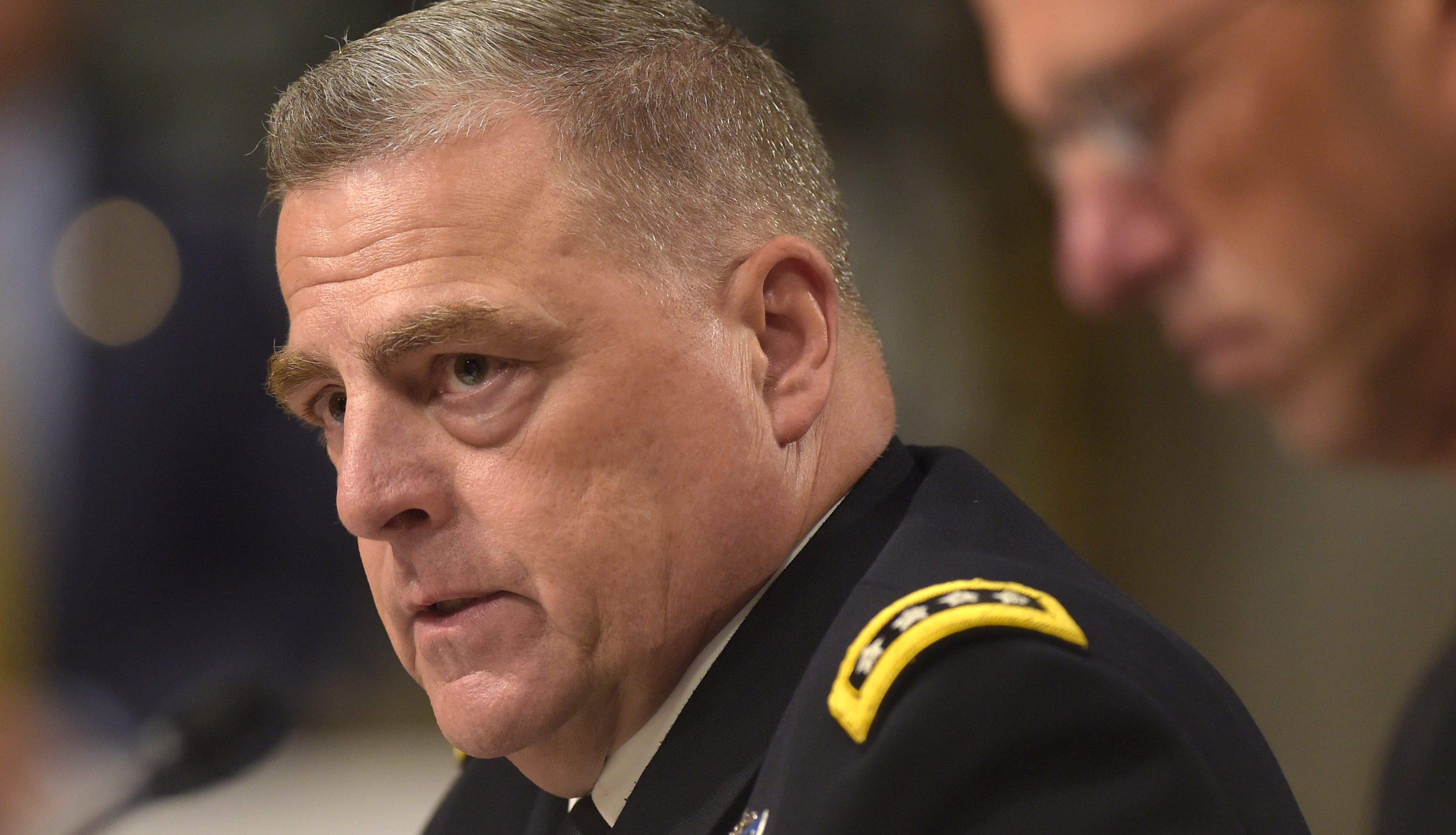The Army is on its way to bringing its total end strength back up to over a million soldiers, but it needs a steady budget in order to keep units manned, trained and equipped, the service's top officer told the Senate Armed Services Committee on Thursday.
Increased funding in 2016 helped to reverse a readiness decline, Army Chief of Staff Gen. Mark Milley told the Senate Armed Services Committee, but that progress could be lost without a real budget for fiscal year 2018.
"Gen. Milley, I was struck by – you mentioned the words 'hollow Army,'" said Sen. John McCain, R-Ariz. "This committee hasn't heard that since Gen. [Edward] 'Shy' Meyer came over and said it back in the 1970s. How far away are we from a hollow Army?"
"I believe, senator, that if we continue down the road, and we continue to execute [Budget Control Act] caps and funding, and continue with [continuing resolutions], it will result in a hollow Army," Milley told the SASC chairman. "How far away? I think right now, what you did last year, you stopped the downward trend. You halted it, stopped the bleeding, so to speak. And we are making slow but steady progress. If that stops, we will, eventually, in the not too distant future, have a hollow Army and put soldiers at risk on the battlefield."
Only about 30 percent of the Army's brigade combat teams are ready, Milley said. The goal is 66 percent.
"The most significant right now, the drag, if you will, is manning," Milley told Sen. Jack Reed, D-R.I. "Many of these units are not at full manning, and that drags down their readiness."
The Army is growing the active force by 16,000 soldiers this year, and plans call for those soldiers to round out existing brigades, Milley said. As of late May, the service has met about 80 percent of its retention mission and 75 percent of its recruiting mission for the fiscal year, Milley added.
The Army is also working to cut down its number of nondeployable soldiers. The total is down to 20,000, he said, a third of what it was five years ago. Two percent of those soldiers are permanently nondeployable.
On average, units are manned to 95 percent, and maybe 10 percent of those are nondeployable, and another five percent are out on a day-to-day basis, Milley said. That adds up to a significant gap when units train.
"What we want to do is make the existing force structure whole," he said.
The new total of 476,000 soldiers in the active Army, along with 343,000 in the National Guard and 199,000 in the Reserve is an improvement, he added, but it won't be enough to meet the Army's current strategy.
"Four hundred seventy-six [thousand] improves it, but still, it still does not meet the worst-case requirements," Milley said.
Going forward, the Defense Department is working on a strategic review.
"When that review is done, that will give us our baseline of how big and what capabilities we will need across the board as a military," he said.
The goal for now is to fill in current force structure, he added, then make a request in fiscal year 2019 for what they'll need going forward.
Meghann Myers is the Pentagon bureau chief at Military Times. She covers operations, policy, personnel, leadership and other issues affecting service members.




